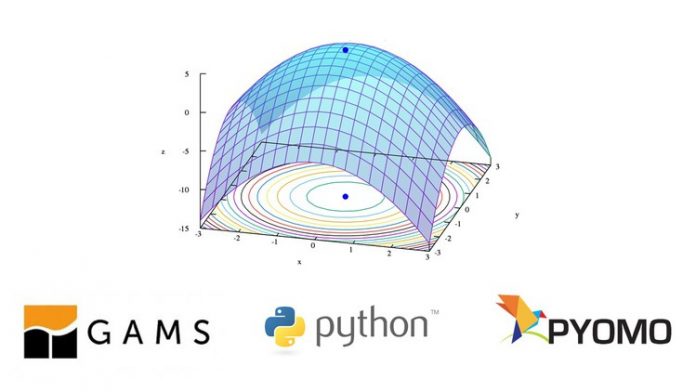Note:
If you guys are getting coupon expired or course is not free after opening the link, then it is due to the fact that course instructors provide only few hundreds or thousands of slots which get exhausted. So, try to enroll in the course as soon as it is posted in the channel. The Coupons may expire any time for instant notification follow telegram channel


This introductory course to optimization in GAMS and Pyomo (Python) contains 4 modules, namely,
-
Linear programming
-
Nonlinear programming
-
Mixed Integer Linear Programming, and
-
Mixed-Integer Nonlinear Programming
In each module, we aim to teach you the basics of each type of optimization through 3 different illustrative examples and 1 assingment from different areas of science, engineering, and management. Using these examples, we aim to gently introduce you to coding in two environments commonly used for optimization, GAMS and Pyomo. GAMS is a licensed software, for which we use a demo license in this course. Pyomo is an open-source package in Python, which we use Google Colaboratory to run. As we proceed through the different examples in each module, we also introduce different functionalities in GAMS and Python, including data import and export.
At the end of this course, you will be able to,
-
Read a problem statement and build an optimization model
-
Be able to identify the objective function, decision variables, constraints, and parameters
-
-
Code an optimization model in GAMS
-
Define sets, variables, parameters, scalars, equations
-
Use different solvers in GAMS
-
Leverage the NEOS server for optimization
-
Import data from text, gdx, and spreadsheet files
-
Export data to text, gdx, and spreadsheet files
-
Impose different variable ranges, and bounds
-
-
Code an optimization model in Pyomo
-
Define models, sets, variables, parameters, constraints, and objective function
-
Use different solvers in Pyomo
-
Leverage the NEOS server for optimization
-
Import data from text, gdx, and spreadsheet files
-
Export data to text, gdx, and spreadsheet files
-
Impose different variable ranges, and bounds
-










![Passive Income: Create & Sell Online Courses [Full Course]](https://oyoads.in/wp-content/uploads/passive-income-create-sell-online-courses-full-course_661cb1a9a14ff-218x150.jpeg)
![AI for Business Strategy & Planning [Masterclass]](https://oyoads.in/wp-content/uploads/ai-for-business-strategy-planning-masterclass_661cb19898162-218x150.jpeg)











![[100% Free]Python Bootcamp 2020 Build 15 working Applications and Games (31.5 Hours)](https://oyoads.in/wp-content/uploads/2020/05/Python-Bootcamp-2020-Build-15-working-Applications-and-Games-1-100x70.jpg)

![[100% Free]Java Programming: Complete Beginner to Advanced](https://oyoads.in/wp-content/uploads/2020/05/IMG_20200519_054150_522-100x70.jpg)
